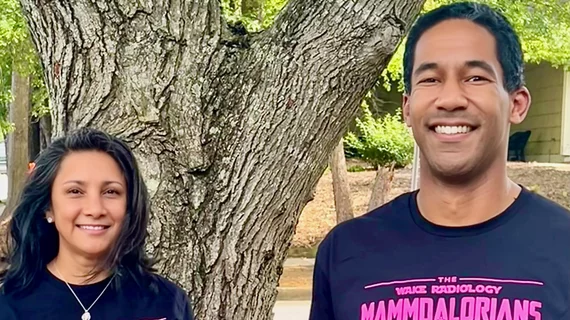Wake Radiology raises over $124,000 toward finding a cure for breast cancer
Raleigh, North Carolina-based Wake Radiology has raised tens of thousands of dollars toward research on finding a cure for breast cancer, leaders said Wednesday.
More than 50 members of the practice’s team will participate in the Susan G. Komen Triangle Race for the Cure, taking place May 4 at Research Triangle Park. With the event falling on Star Wars Day, Wake Radiology participants (the third largest team registered for the event) have dubbed themselves “The Mammdalorians,” a play on the popular Disney TV show.
“Every year, we love to see the community come together to support life-saving breast cancer research and raise critical funds for the care of patients fighting the disease,” radiologist Brent Townsend, MD, president and managing partner, said in an announcement. “We’re proud that since we started participating more than 10 years ago, we’ve raised $124,425 and signed up countless patients for our 3D mammograms.”
Wake Radiology also is an official event sponsor and will have a tent set up at the event. In 2024, an estimated 11,190 women in North Carolina will be diagnosed with breast cancer and 1,450 will die of the disease, the practice noted.
Founded in 1953, Wake Radiology UNC REX Healthcare is the oldest and largest outpatient imaging group in the Research Triangle—which includes Raleigh, Durham and Chapel Hill. The practice employs over 50 radiologists and has a dozen locations across Wake County.

